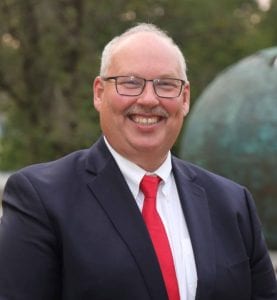
August 13, 2020 by Thomas Scott and Robert N. Baldwin
on behalf of the Massachusetts Association of School Superintendents
Across the Commonwealth, school districts are beginning to announce their plans for the start of the 2020-2021 school year. Some communities are choosing not to reopen school buildings, opting instead for full distance learning for all students. Other communities are moving forward with a “hybrid” model, in which some groups of students alternate between in-person learning and distance learning, in order to ensure physical distancing in schools.
Neither of these approaches is being met with universal acclaim. Superintendents and School Committees find themselves caught between the impassioned viewpoints of two opposing camps. They are hearing from parents who advocate for at least some return to in-person schooling, in part because of fears about the long-term effects of students being out of school, without the supports and interactions they need to thrive. They’re also hearing from constituents, including many teachers’ union leaders, who insist that school buildings should remain closed altogether to protect students and staff and to prevent the spread of the virus.
Many of the 275 members of the Massachusetts Association of School Superintendents (MASS) were eager and hopeful to have their School Committee approve a hybrid model. Especially in communities where the COVID-19 infection rate is low, many superintendents are confident that schools can make the necessary adjustments to resume in-person instruction while protecting the health and safety of students and staff. These district leaders have worked diligently with local task forces throughout the spring and summer to craft reopening plans that adhere to state guidelines and “follow the science.” While so many other states across the country cannot even consider reopening schools as the infection rate continues to soar, Massachusetts is in a very different position. Many Superintendents believe that the health and safety measures they will put in place – especially the redesign of schools to ensure physical distancing, along with requirements for face covering, hand-washing, symptom screening, and rigorous cleaning and sanitizing protocols – create the conditions to begin reopening schools incrementally and responsibly.
Despite these precautions, some communities ultimately will decide, as some already have, that even a partial reopening is not worth the risk, and begin the year with all students learning from home. In those communities, Superintendents will work with teachers’ unions to design and implement distance learning plans that reflect lessons learned last spring about what worked well and what needs improvement. Districts will have to find creative ways for students and families to “meet” their new teachers, even if not in person, to establish relationships at the start of the school year. Districts operating fully remote models also will have to devise strategies to serve students with the greatest needs, particularly students with disabilities, English learners, children living in poverty, and others who were not fully engaged in distance learning from March to June. Challenging questions remain about how schools can provide additional services remotely to address students’ social-emotional needs, especially their mental and physical health.
There is no shortage of opinions about what is the “right” way to approach the new school year. A quick scroll through any social media feed highlights the vast divide on this issue, with proponents from both sides growing increasingly fervent every day. While superintendents have urged State officials to provide more clear direction for school opening, unless State officials change their position in the days ahead, these decisions are left solely in the hands of the superintendents and school committees. Therefore, each Superintendent has a weighty responsibility to cut through the noise, examine the facts, weigh the pros and cons, and recommend a plan that best protects and educates the students in their community. Ultimately, each proposal must be approved by the School Committee, but even their decision is not final unless the terms are negotiated with the local teachers’ union. All of this occurs while the public health situation – and the response to it – remains a moving target.
Whatever the outcome in each community, the new school year can begin successfully only if everyone involved commits to working together for the benefit of students. In the remaining weeks before students resume learning, we have a critical opportunity for parents, educators, union leaders, and community partners – regardless of the model they each wanted to see adopted – to move forward with a shared sense of purpose. We are living in imperfect times, to say the least, so while no plan can achieve a “perfect” result, let’s all strive to be creative, open-minded, resilient, and unequivocally determined to get our students back to learning.
Thomas Scott, Ed.D. is Executive Director of the Massachusetts Association of School Superintendents (MASS). Robert N. Baldwin, Ed.D. is President of MASS and Superintendent of the Fairhaven Public Schools.

